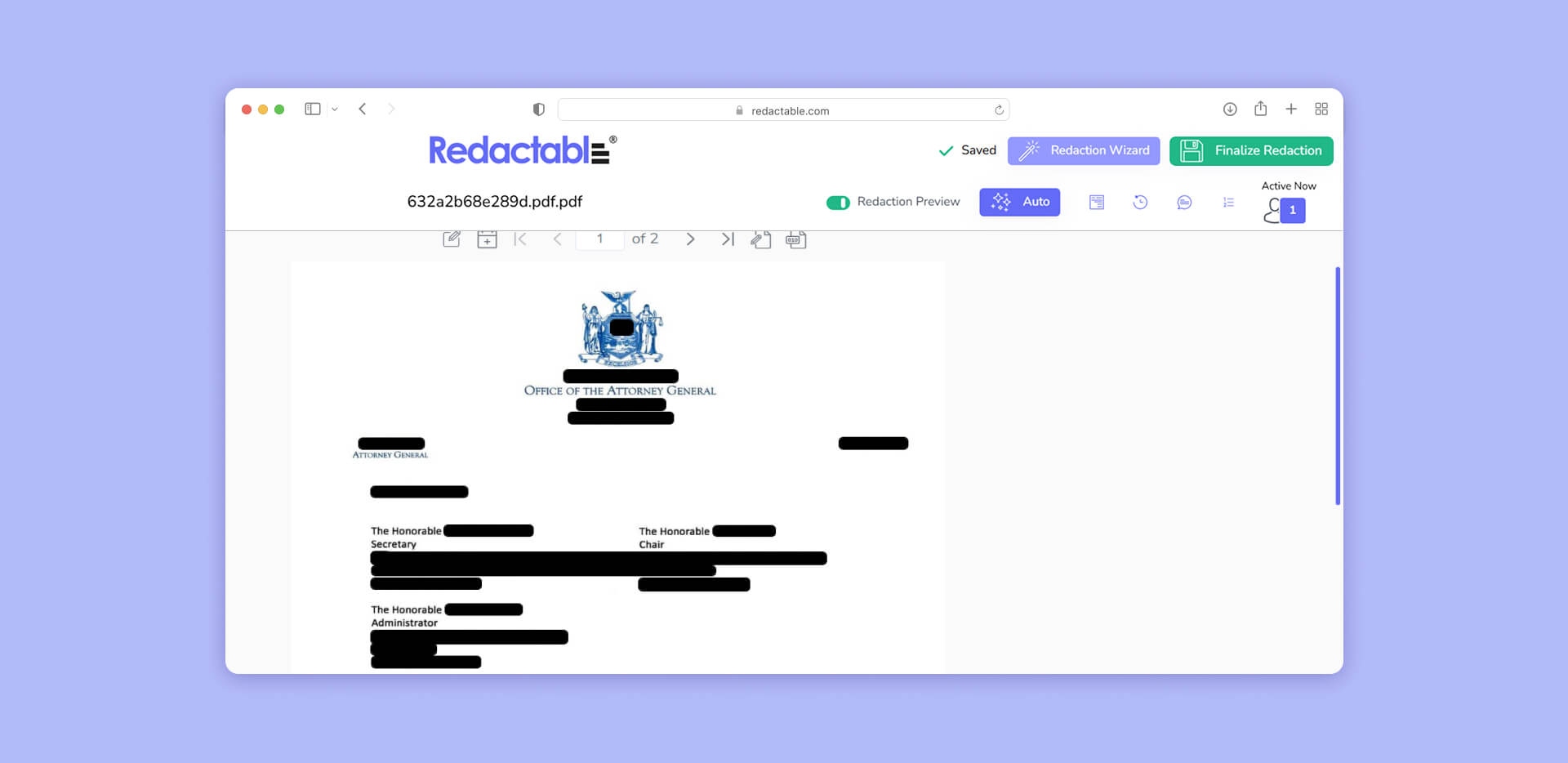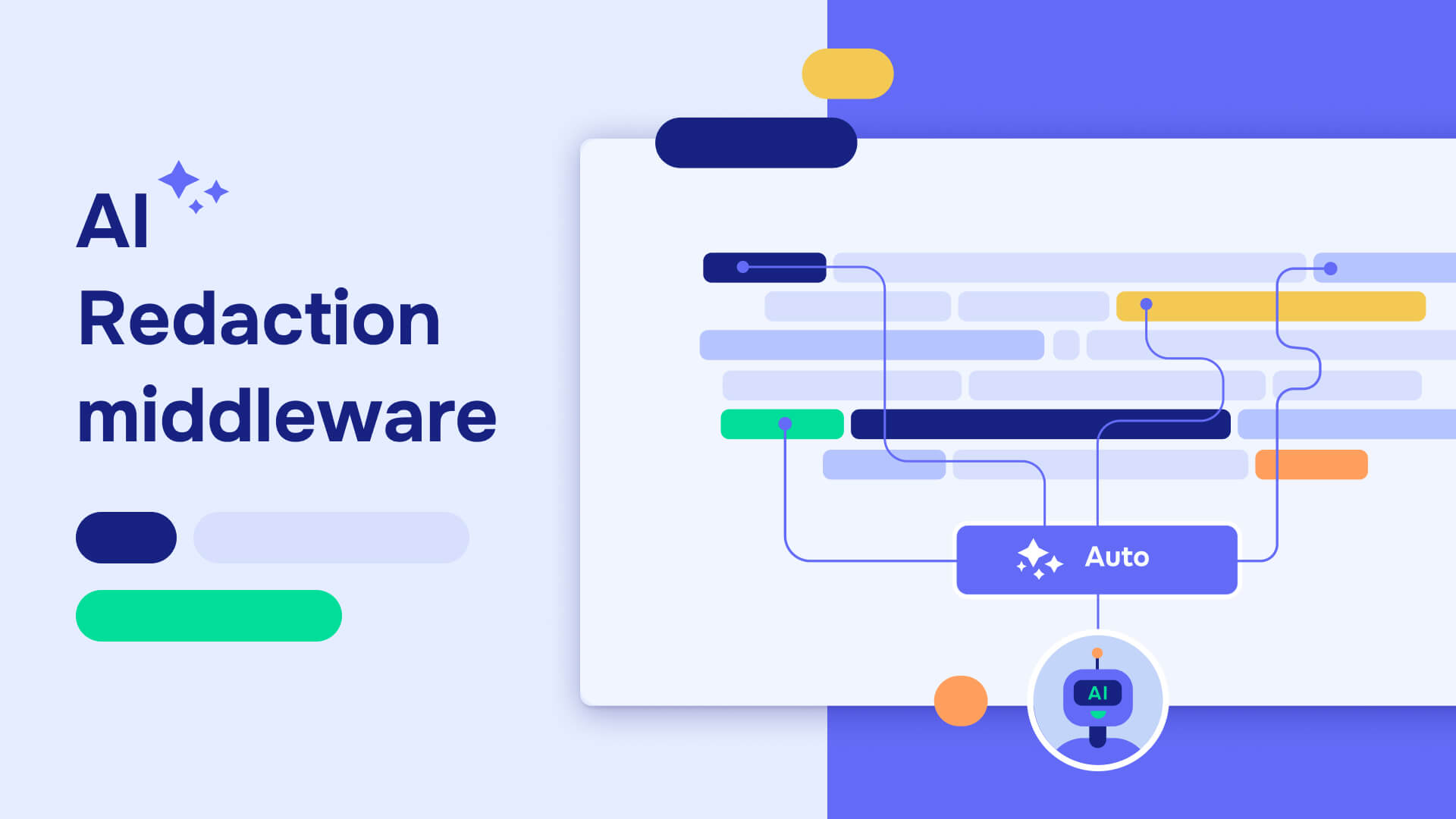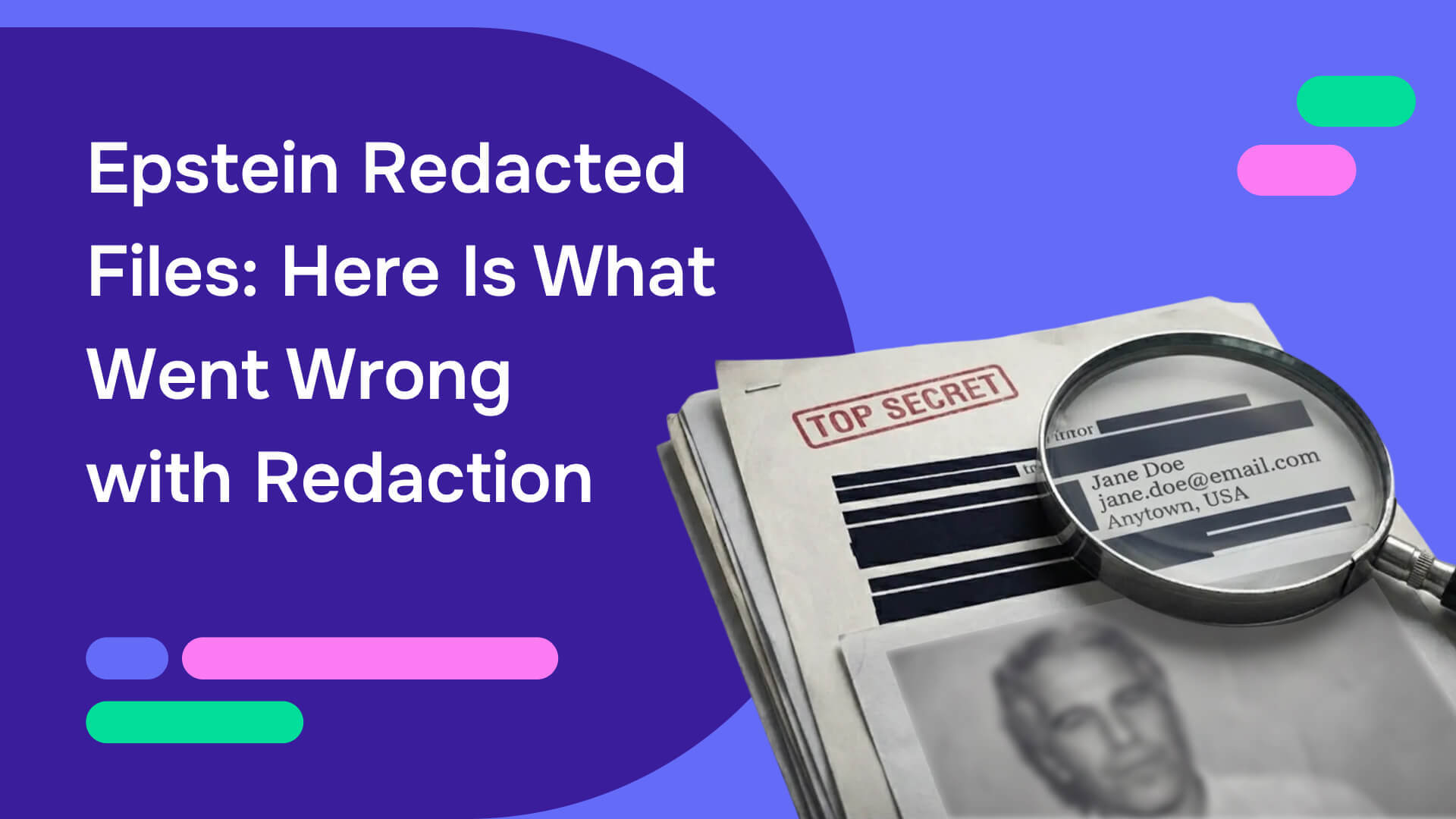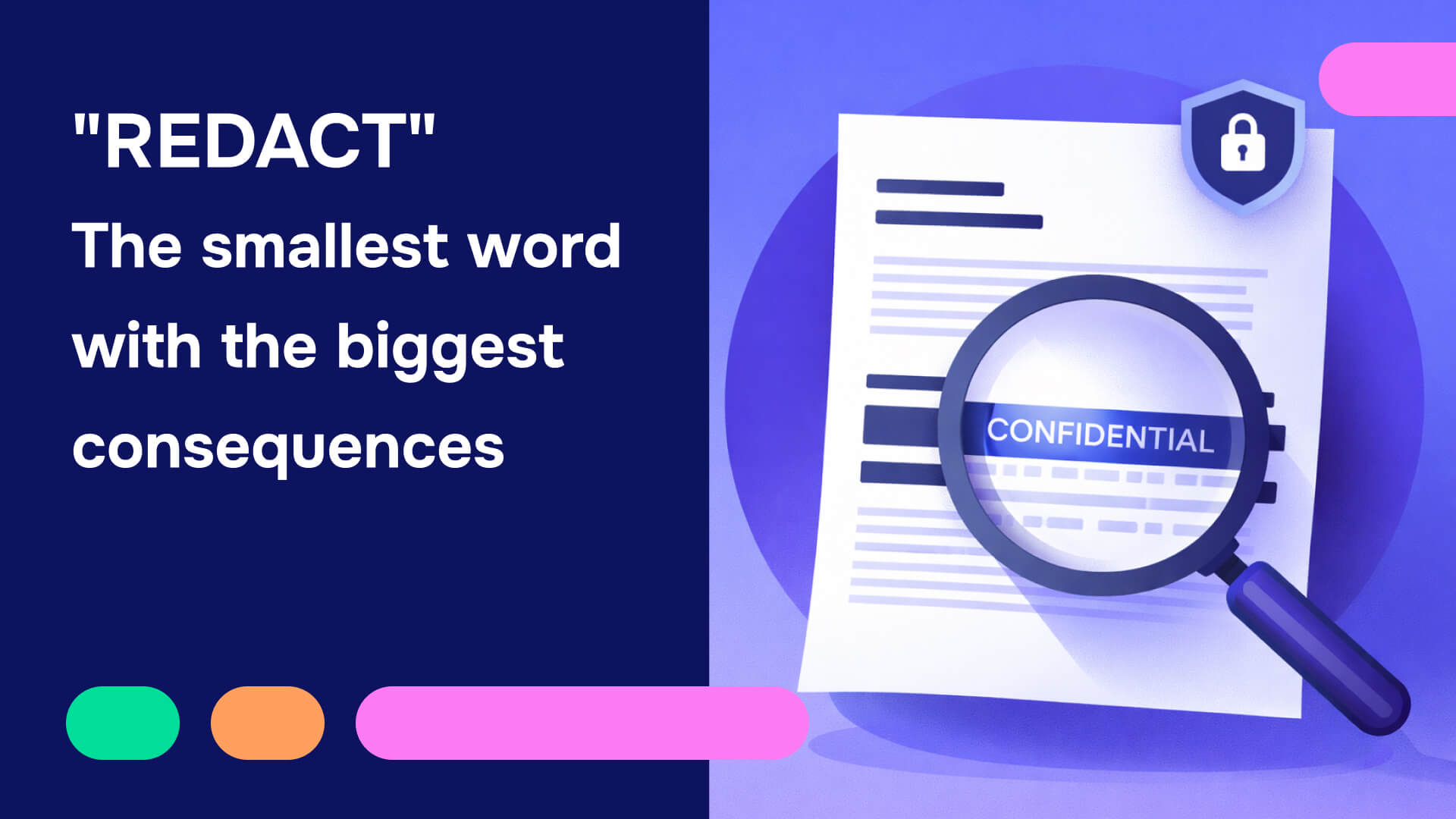Your organization processes thousands of documents containing Social Security numbers, patient records, financial account details, and confidential contracts. Missing just one piece of sensitive data costs an average of $4.88 million per breach. Every one of these files has the potential to contain information that must never be exposed: personal identifiers, health details, confidential business terms, or financial account numbers.

The challenge? You can’t manually review everything anymore. The volume is too high, and the consequences of missing even one piece of sensitive data can be devastating—ranging from heavy fines to lost client trust.
This is where AI redaction middleware comes in. It’s not just another tool—it’s an embedded safeguard that quietly works in the background, ensuring that sensitive information is automatically detected and securely removed before it can ever leak out.
What is AI redaction middleware?
Think of AI redaction middleware as a smart filter that sits inside your document workflow. Instead of requiring someone to upload files to a standalone redaction program, middleware runs within your systems - whether you’re using a document management tool, legal case platform, EHR system, or cloud storage.
Whenever a document passes through, it’s scanned for sensitive information. Anything identified - names, social security numbers, bank details, medical information, contract clauses - is securely removed before the document reaches its destination.
Key traits of redaction middleware:
- Embedded in workflows: Works automatically during normal operations, without extra steps for the user.
- AI-powered sensitive data detection: Goes beyond keywords, using context to avoid over- or under-redacting.
- File-type agnostic: Handles PDFs, Word docs, spreadsheets, scanned images, and more.
- Security-focused: Data is permanently removed, not just covered with a black box.
- Customizable rules: Organizations can define what counts as sensitive for their unique needs.
Why middleware is becoming a necessity?
1. Compliance is non-negotiable
Regulations like GDPR, CCPA, HIPAA, and PCI DSS carry strict requirements for handling sensitive data. Failing to comply, even by accident, can trigger:
- Large financial penalties
- Legal action
- Long-term reputational harm
2. The document volume proble
Even small organizations now handle thousands of documents per month. Manually checking each one is slow, expensive, and still prone to human error. Middleware automates the detection and removal of sensitive data, keeping processes fast and consistent.
3. Prevention is cheaper than reaction
Recovering from a data breach is far more costly - both financially and in lost trust - than preventing one. AI redaction middleware helps organizations take a privacy-first approach, making leaks far less likely.

4. Works across all departments
AI redaction isn’t just for legal teams. It benefits:
- HR: Protects employee personal records.
- Finance: Removes credit card numbers and transaction details.
- Healthcare: Strips PHI from medical summaries.
- Operations: Sanitizes contracts and vendor agreements.
- IT: Ensures compliance with internal and external audits.
How AI redaction middleware works in practice
Here’s what actually happens behind the scenes:
- Document entry
A file enters your system - uploaded, scanned, emailed, or synced from a connected platform.
- AI analysis
Natural Language Processing (NLP) and computer vision models scan text, tables, and images to detect sensitive information.
- Custom rule application
Your organization’s redaction policies - covering legal terms, identifiers, or industry-specific jargon - are applied to the detection results.
- Irreversible redaction
Sensitive data is completely deleted from the document file, preventing recovery even with forensic tools.
- Logging & reporting
Every action is documented for compliance audits, complete with timestamps and reasoning.

Practical benefits over manual redaction
- Speed: Middleware processes thousands of documents in the time it takes a human to review one.
- Consistency: AI doesn’t get tired, distracted, or make judgment errors after a long shift.
- Scalability: Whether you have 100 or 100,000 documents, the redaction speed remains high.
- Lower Costs: Reduces labor hours spent on manual review.
- Reduced Risk: The chance of a missed piece of sensitive data drops dramatically.
How to choose the right redaction middleware
When evaluating options, focus on practical factors that will determine whether it actually works for your team:
- Accuracy in context
Look for AI that understands when to redact and when not to. Misidentifying a word like “Apple” in a fruit inventory report as a corporate name wastes time and hides useful data.
- Connects directly to your existing document systems
Avoid solutions that require you to export and re-import files constantly. True middleware should connect directly to the tools you already use.
- Custom redaction rules
Every organization has unique sensitivity thresholds. The best software lets you define exactly what gets redacted.
- Security certifications
Verify encryption, compliance standards, and data handling policies.
- Performance at scale
Test the tool with a large batch of documents to ensure it keeps up without slowing your workflow.
Why Redactable is the industry leader
1. High-accuracy AI
Redactable’s AI is trained on industry-specific datasets, allowing it to detect sensitive data in even the most complex documents—legal briefs, medical notes, engineering reports, and more.
2. True middleware integration
It works where your documents live. Redactable connects directly to document management systems, cloud storage, and case management tools. No extra uploads, no disruption.
3. Irreversible redaction
Once Redactable removes data, it’s gone. This isn’t a visual mask - it’s a permanent removal from the file, making recovery impossible.

4. Customizable to your needs
Admins can set precise rules for what gets redacted - down to specific legal terms, customer identifiers, or internal project codes.
5. Scales with your growth
From a small legal practice to a multinational enterprise, Redactable can handle your document volume without sacrificing accuracy or speed.
The bottom line
AI redaction middleware is becoming a must-have for any organization that works with sensitive information. It prevents $4.88 million breach costs while processing documents 98% faster than manual review.
Redactable delivers all of these benefits in a secure, integrated package - making it the practical choice for organizations that want privacy protection they can set and forget.
Schedule a demo with our implementation team to see how AI middleware integrates with your existing systems in under 30 minutes - no complex setup or workflow changes required.







